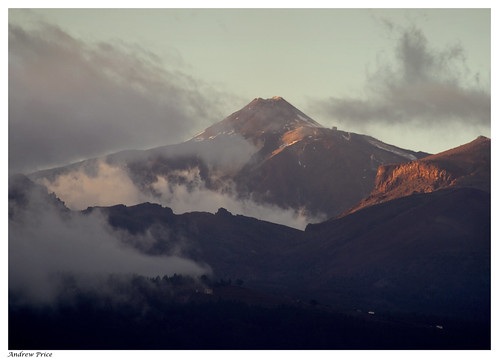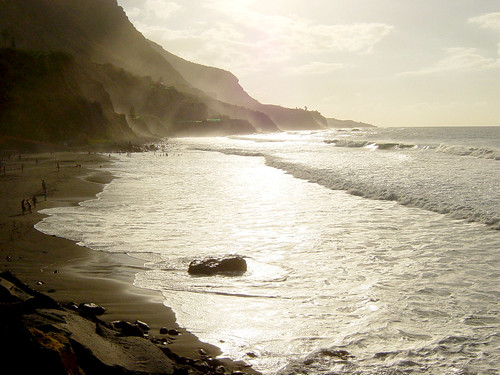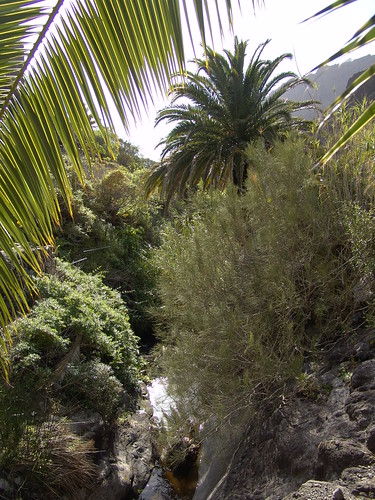It’s May 15 and I’m still wearing socks and sweaters in the south of France. I’m living in the Pyrenees-Orientales department of France because it boasts the most days of sunshine in the whole country. I came here for the sun, the sea and the mountains—for the famed Mediterranean climate. But being a Floridian (most recently from the sub-tropics of South Florida) I’m finding this sock weather surprising. Compared to Northern France, yes, the Mediterranean climate is heavenly. But my toes have other points of reference and right now they’re pointing ever more southerly.

The problem is every place that pleases my toes tends to please loads of tourists as well. And my heart prefers quieter places. In Florida I lived in Everglades National Park where barefoot weather meets the wild calm of nature. Is it even possible to find such chakra balancing elements anywhere in Europe?
I’m not sure, but the Canary Islands of Spain keep presenting themselves to me. Tenerife in particular. I recently read that “Tenerife Island is probably one of the last European paradise destinations”. Representing the outermost region of the European Union, the volcanic archipelago of the Canaries rises out of the ocean just off the northwest coast of Africa near Morocco and the Western Sahara. My French mate stopped there on his way sailing across the Atlantic a few years ago and on a particularly dismal day this past winter he proposed spending a month or two on Tenerife next year.
But several British friends have also mentioned the island. Apparently it’s a popular holiday spot for Brits—not exactly the best sign for peace and tranquility.

On the other hand, I have a copy of the French magazine Terre Sauvage I bought last summer. The magazine covers those wild and natural corners of the planet far from beach resorts and night clubs. The Canaries are featured in this particular issue. Actually, it’s the immense night sky of the Canaries featured in the earthy mag. It claims the observatory on La Palma to be the second most important astronomical center in the world, next to Mauna Kea in Hawaii. The pristine darkness of the islands’ night sky utterly void of light pollution makes the region exceptional for stargazing. On Tenerife the observatory of Mount Teide is home to over a dozen telescopes. That kind of absence of city lights sounds pretty celestial to me.
Though beautiful Tenerife weather does draw sun-bathing, theme-park going tourists to its southern coastline, it’s also home to a national park and nature reserves with sub-tropical and temperate micro-climates that support an incredibly rich biodiversity of flora and fauna. Even more than tourists it seems, Tenerife has attracted crowds of botanists and researchers for centuries, among them Charles Darwin. A New York Times article reported that in an area on Tenerife called the Cruz del Carmen a new species or sub-species is discovered once every six days. A random handful of soil there can easily contain four or five endemic species of insects, reported the same article.

But the most famous natural attraction on the isle is Mount Teide, or Pico del Teide. The highest peak in Spain, this active volcano is the third largest in the world when measured from its base. It presides over 18,900 hectares of protected land of the Teide National Park (Parque Nacional del Teide), an UNESCO World Heritage site. There are approximately 21 posted trails leading to the peak. A free permit issued by the park is required for the last 200 meters.
Tenerife is also rich with less-traveled paths and lesser-known views beyond Mount Teide. Depending on time constraints and levels of expertise one can traverse diverse ecosystems ranging from dry scrublands to rich green fields. With dramatic lunar landscapes and virgin laurel woodlands Tenerife’s backcountry is nothing short of spectacular. Do a little planning and camping permits can be gotten from the Tenerife Cabildo (Island Council) making opportunities to lose oneself in a mysterious volcanic terrain endless.

Okay, I think there’s room enough on Tenerife to find the quiet sanctuary of nature my heart seeks. But I’m still worried about my toes. Yeah, Tenerife’s been dubbed the island of eternal spring, but what exactly does that mean? Whose idea of spring are we talking about here? Hopefully not the same perspective that deems the Mediterranean climate so heavenly.
Tourist information sources show year round average temps on Tenerife ranging from 20ºC/68ºF to 30ºC/86ºF. They also say Tenerife’s weather has the lowest temperature difference between summer and winter than any other place in the world thanks to the trade winds. But on the island itself the variety of weather is broad. On Mount Teide cold winds and snow are winter regularities. However on these same winter days there’s enough warmth for sunbathers to bask on Tenerife beaches, so they claim.

All I really want to know is if, and how long, I’d have to wear socks down there. Official weather charts show January and February as the coldest months with average lows of 15ºC/59ºF. Average highs for those same months are 20ºC/69ºF.
My toes can handle that. When are we going?




Pingback: Here’s to climbing the ladder. « ma machine a ecrire
Sound perfect for mid-winter; simple living, camping options?
Yes, I agree, toes should have a say so in decisions to chose a home!